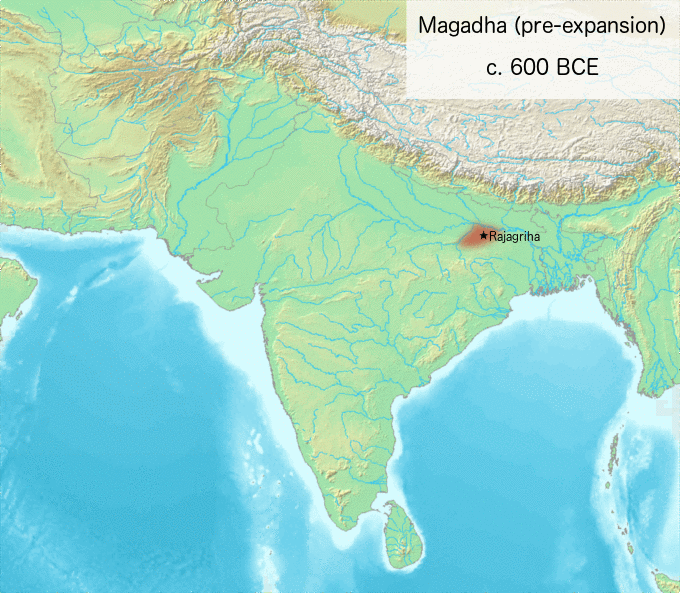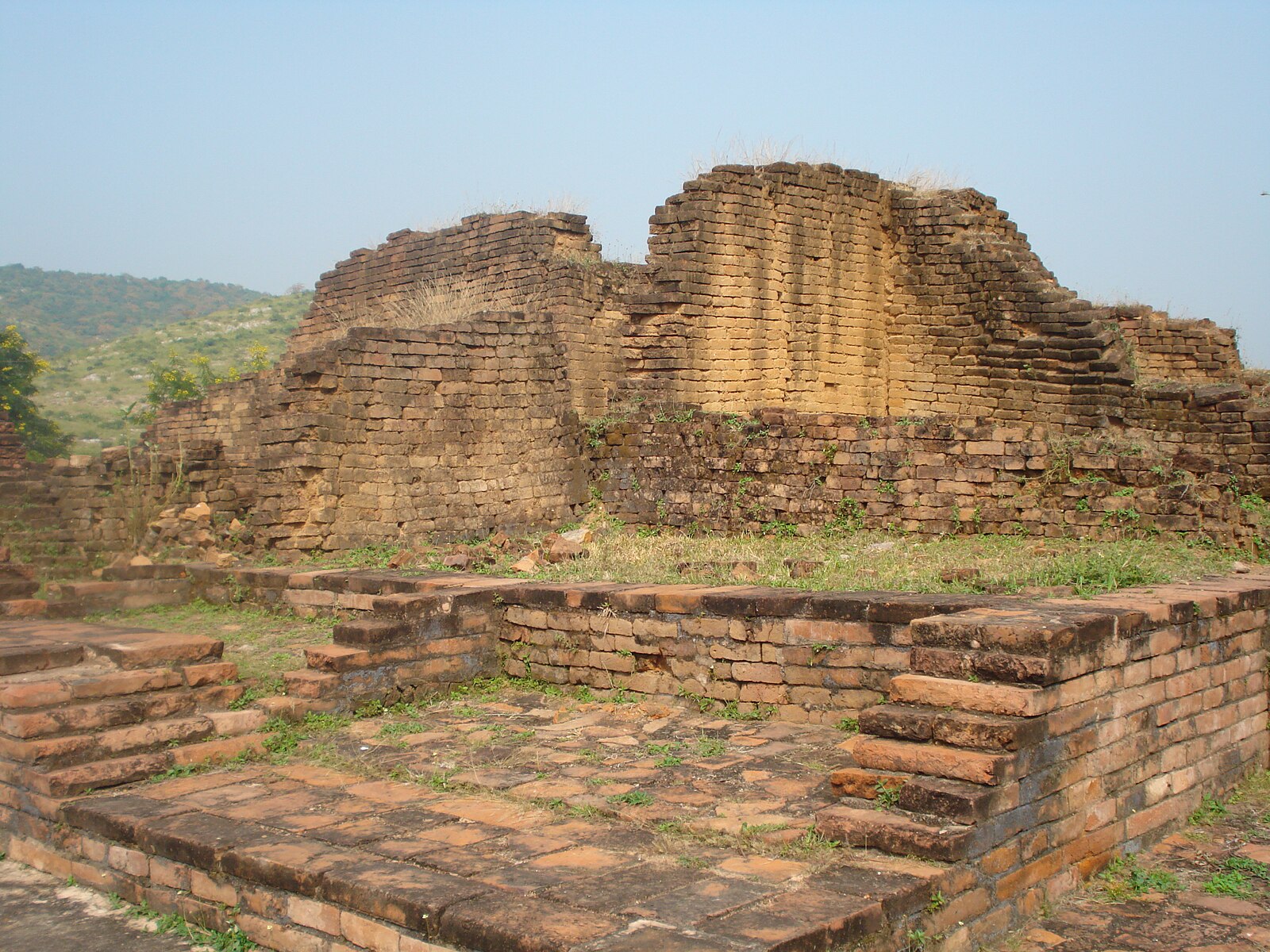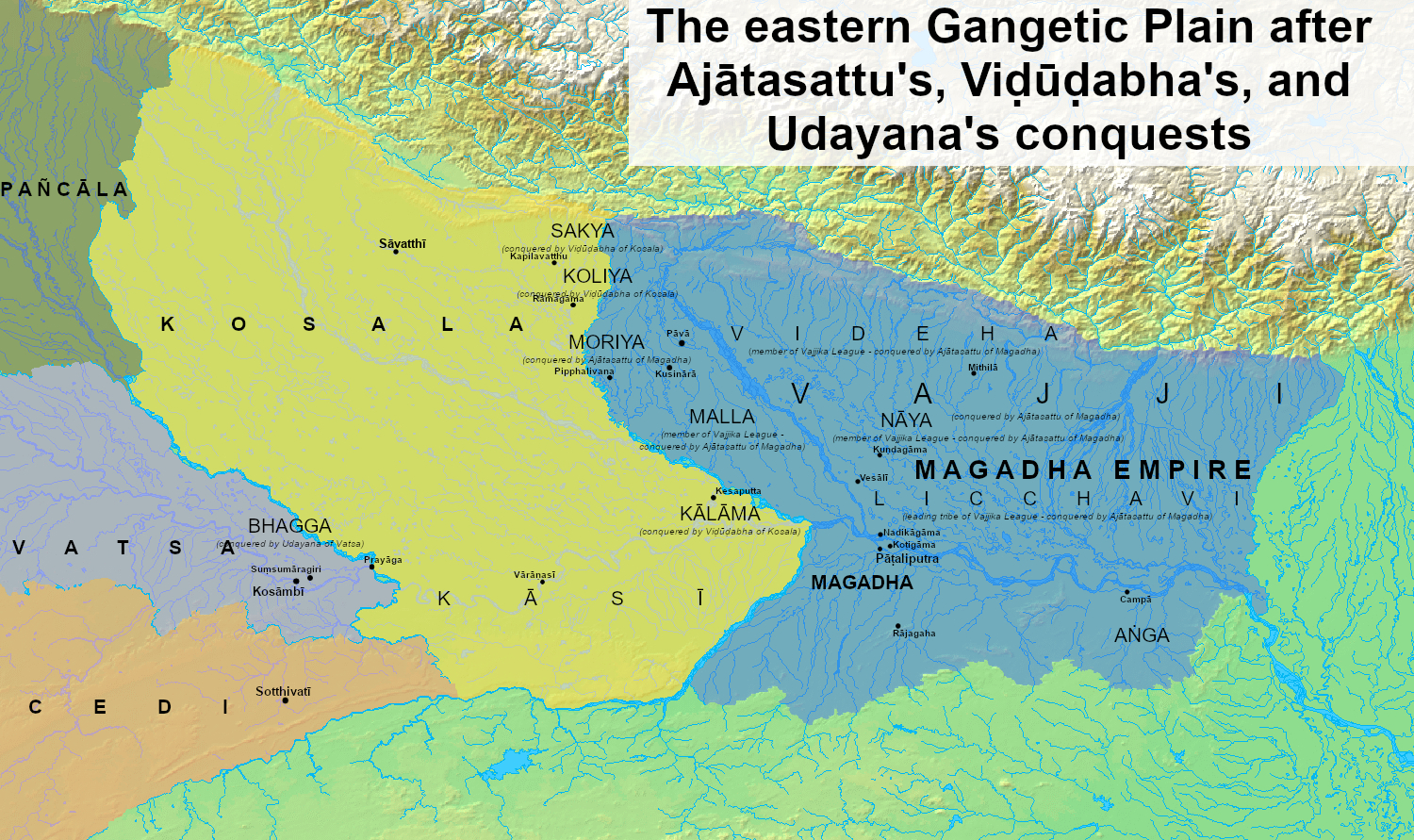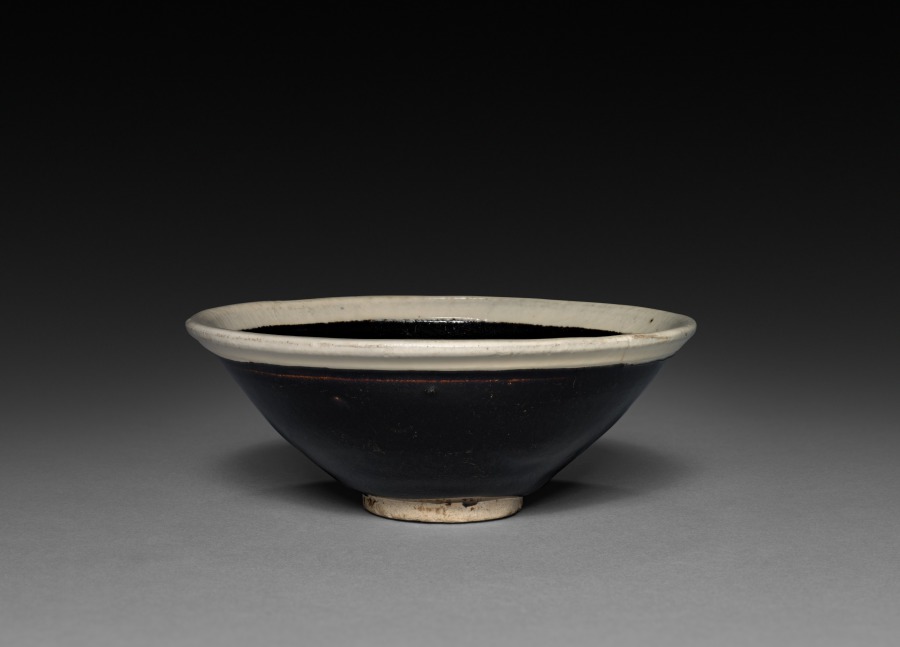4.5: Mahajanapadas (600 BCE – 345 BCE)
- Page ID
- 219978
\( \newcommand{\vecs}[1]{\overset { \scriptstyle \rightharpoonup} {\mathbf{#1}} } \)
\( \newcommand{\vecd}[1]{\overset{-\!-\!\rightharpoonup}{\vphantom{a}\smash {#1}}} \)
\( \newcommand{\id}{\mathrm{id}}\) \( \newcommand{\Span}{\mathrm{span}}\)
( \newcommand{\kernel}{\mathrm{null}\,}\) \( \newcommand{\range}{\mathrm{range}\,}\)
\( \newcommand{\RealPart}{\mathrm{Re}}\) \( \newcommand{\ImaginaryPart}{\mathrm{Im}}\)
\( \newcommand{\Argument}{\mathrm{Arg}}\) \( \newcommand{\norm}[1]{\| #1 \|}\)
\( \newcommand{\inner}[2]{\langle #1, #2 \rangle}\)
\( \newcommand{\Span}{\mathrm{span}}\)
\( \newcommand{\id}{\mathrm{id}}\)
\( \newcommand{\Span}{\mathrm{span}}\)
\( \newcommand{\kernel}{\mathrm{null}\,}\)
\( \newcommand{\range}{\mathrm{range}\,}\)
\( \newcommand{\RealPart}{\mathrm{Re}}\)
\( \newcommand{\ImaginaryPart}{\mathrm{Im}}\)
\( \newcommand{\Argument}{\mathrm{Arg}}\)
\( \newcommand{\norm}[1]{\| #1 \|}\)
\( \newcommand{\inner}[2]{\langle #1, #2 \rangle}\)
\( \newcommand{\Span}{\mathrm{span}}\) \( \newcommand{\AA}{\unicode[.8,0]{x212B}}\)
\( \newcommand{\vectorA}[1]{\vec{#1}} % arrow\)
\( \newcommand{\vectorAt}[1]{\vec{\text{#1}}} % arrow\)
\( \newcommand{\vectorB}[1]{\overset { \scriptstyle \rightharpoonup} {\mathbf{#1}} } \)
\( \newcommand{\vectorC}[1]{\textbf{#1}} \)
\( \newcommand{\vectorD}[1]{\overrightarrow{#1}} \)
\( \newcommand{\vectorDt}[1]{\overrightarrow{\text{#1}}} \)
\( \newcommand{\vectE}[1]{\overset{-\!-\!\rightharpoonup}{\vphantom{a}\smash{\mathbf {#1}}}} \)
\( \newcommand{\vecs}[1]{\overset { \scriptstyle \rightharpoonup} {\mathbf{#1}} } \)
\( \newcommand{\vecd}[1]{\overset{-\!-\!\rightharpoonup}{\vphantom{a}\smash {#1}}} \)
\(\newcommand{\avec}{\mathbf a}\) \(\newcommand{\bvec}{\mathbf b}\) \(\newcommand{\cvec}{\mathbf c}\) \(\newcommand{\dvec}{\mathbf d}\) \(\newcommand{\dtil}{\widetilde{\mathbf d}}\) \(\newcommand{\evec}{\mathbf e}\) \(\newcommand{\fvec}{\mathbf f}\) \(\newcommand{\nvec}{\mathbf n}\) \(\newcommand{\pvec}{\mathbf p}\) \(\newcommand{\qvec}{\mathbf q}\) \(\newcommand{\svec}{\mathbf s}\) \(\newcommand{\tvec}{\mathbf t}\) \(\newcommand{\uvec}{\mathbf u}\) \(\newcommand{\vvec}{\mathbf v}\) \(\newcommand{\wvec}{\mathbf w}\) \(\newcommand{\xvec}{\mathbf x}\) \(\newcommand{\yvec}{\mathbf y}\) \(\newcommand{\zvec}{\mathbf z}\) \(\newcommand{\rvec}{\mathbf r}\) \(\newcommand{\mvec}{\mathbf m}\) \(\newcommand{\zerovec}{\mathbf 0}\) \(\newcommand{\onevec}{\mathbf 1}\) \(\newcommand{\real}{\mathbb R}\) \(\newcommand{\twovec}[2]{\left[\begin{array}{r}#1 \\ #2 \end{array}\right]}\) \(\newcommand{\ctwovec}[2]{\left[\begin{array}{c}#1 \\ #2 \end{array}\right]}\) \(\newcommand{\threevec}[3]{\left[\begin{array}{r}#1 \\ #2 \\ #3 \end{array}\right]}\) \(\newcommand{\cthreevec}[3]{\left[\begin{array}{c}#1 \\ #2 \\ #3 \end{array}\right]}\) \(\newcommand{\fourvec}[4]{\left[\begin{array}{r}#1 \\ #2 \\ #3 \\ #4 \end{array}\right]}\) \(\newcommand{\cfourvec}[4]{\left[\begin{array}{c}#1 \\ #2 \\ #3 \\ #4 \end{array}\right]}\) \(\newcommand{\fivevec}[5]{\left[\begin{array}{r}#1 \\ #2 \\ #3 \\ #4 \\ #5 \\ \end{array}\right]}\) \(\newcommand{\cfivevec}[5]{\left[\begin{array}{c}#1 \\ #2 \\ #3 \\ #4 \\ #5 \\ \end{array}\right]}\) \(\newcommand{\mattwo}[4]{\left[\begin{array}{rr}#1 \amp #2 \\ #3 \amp #4 \\ \end{array}\right]}\) \(\newcommand{\laspan}[1]{\text{Span}\{#1\}}\) \(\newcommand{\bcal}{\cal B}\) \(\newcommand{\ccal}{\cal C}\) \(\newcommand{\scal}{\cal S}\) \(\newcommand{\wcal}{\cal W}\) \(\newcommand{\ecal}{\cal E}\) \(\newcommand{\coords}[2]{\left\{#1\right\}_{#2}}\) \(\newcommand{\gray}[1]{\color{gray}{#1}}\) \(\newcommand{\lgray}[1]{\color{lightgray}{#1}}\) \(\newcommand{\rank}{\operatorname{rank}}\) \(\newcommand{\row}{\text{Row}}\) \(\newcommand{\col}{\text{Col}}\) \(\renewcommand{\row}{\text{Row}}\) \(\newcommand{\nul}{\text{Nul}}\) \(\newcommand{\var}{\text{Var}}\) \(\newcommand{\corr}{\text{corr}}\) \(\newcommand{\len}[1]{\left|#1\right|}\) \(\newcommand{\bbar}{\overline{\bvec}}\) \(\newcommand{\bhat}{\widehat{\bvec}}\) \(\newcommand{\bperp}{\bvec^\perp}\) \(\newcommand{\xhat}{\widehat{\xvec}}\) \(\newcommand{\vhat}{\widehat{\vvec}}\) \(\newcommand{\uhat}{\widehat{\uvec}}\) \(\newcommand{\what}{\widehat{\wvec}}\) \(\newcommand{\Sighat}{\widehat{\Sigma}}\) \(\newcommand{\lt}{<}\) \(\newcommand{\gt}{>}\) \(\newcommand{\amp}{&}\) \(\definecolor{fillinmathshade}{gray}{0.9}\)Introduction
The Mahajanapadas (4.5.1) were composed of sixteen different kingdoms or communities. In the last part of the Vedic period, people migrated from the failing Indus Valley area into the region we call India today. At the beginning of the migration, tribal groups formed permanent settlements called janapadas (Jana – people, Pada – footprint). Rivers were plentiful and flowed from the Himalayas, creating rich, fertile soil. The region also contained large deposits of iron ore, and producing iron weapons and tools enhanced war and farming capabilities. Some of the janapadas expanded into larger janapadas called Mahajanapadas. Some of the Mahajanapadas had democratic governments, and others were monarchical and controlled by kings. With the growth in the size of the janapadas came warfare to seize control of other kingdoms. And with the expansion of some of the janapadas came the development of large cities.
.png?revision=1&size=bestfit&width=774&height=597)
As people started migrating from smaller civilizations, they started forming cities. Many professions and trades between small groups of people became prominent practices. Eventually, the Vedic era came to an end and gave rise to Janapadas, i.e., kingdoms. How do you think the transition happened? Peacefully? Or it also would have involved wars and fights?
India, a land of great rulers, gigantic palaces and beautifully sculpted temples. Kingdoms, big and small have fought tirelessly for power and territory here. Around 2500 years ago, there were some great kingdoms in northern India. The 4 main Mahajanapadas (Sanskrit for 'great-realm’) in this region were Kashi, Kosala, Magadha and The Republic of Vajjis and they were all competing against each other. How many great rulers and unique strategies did it take for the best kingdom to emerge victoriously? Who were the kings involved?
Silver Coins
The Mahajanapadas were documented in one of the Buddhist texts, and based on the information in the texts, historians believe the coins minted by the Mahajanapadas were unique. The coins were the earliest coins of ancient India and were made using the ‘punch-marked’ method, a process different from that of other earlier regions. The punch-marked coins were classified as either local or imperial. Each of the janapadas created the local coins. The Magadha began issuing their pre-imperial coins before they started taking over the other janapadas. Punch-marked coins were made of silver, copper, or alloys. The coins had no inscriptions or value noted on them; instead, they had defined patterns punched into the metal. The images of coins from Avanti (4.5.2), Gandhara (4.5.3), or Kurus (4.5.4) demonstrate the local designs for each janapada. The coin (4.5.5) from Magahda is more ornate and has multiple symbols. The Magahda made their coins with five different punch marks. As the Magahda conquered other janapadas, they substituted their coins for the local coins. They used specific patterns, including a symbol for the sun. Some symbols were struck over parts of other symbols.
.jpg?revision=1&size=bestfit&width=813&height=436)
._Circa_220-185_BC.jpg?revision=1)
_circa_350-315_BCE.jpg?revision=1)

Magadha was considered the most prosperous and prominent Mahajanapadas and the center for the following empires, including the Maurya Dynasty, which began in this state. Gautama Buddha, who founded Buddhism, lived most of his life in the area. He received enlightenment under the Bodhi Tree in Bodh Gaya, now one of Buddhism’s most sacred sites. Magadha performed a central role in the development of both Jainism and Buddhism. The leaders of Magadha continually fought others to conquer territory. The map (4.5.6) demonstrates how the armies moved and took over other states until the end, when they were defeated.

Brick Buildings
The Akhara was a place to train for martial arts or monastic thoughts. Students would form a group to study under a specific leader. While at the Akhara, students would be expected to renounce outside life and focus on living to the pure standards defined at the Akhara. Jarasandha was a king of Magadha, and the building (4.5.7) was his Akhara, where he trained with his army. He united many kings and warriors to fight for the cause and train in martial arts at the Akhara. Legend said he was a mighty wrestler and challenged multiple other kings to wrestle him at his Akhara, defeating them. Jarasandha was finally killed in a duel at the location.
Chariot marks are seen as two deep furrows cut into the rock where charioteers practiced wartime maneuvers. The quadrangular stone cut structure is accessed by steps on one side. A mud pit was an essential feature for the wrestlers to practice. The pit was made from red soil, at least twenty feet wide and three feet deep. Ghee (clarified butter) and nut oils were mixed with the soil to protect the wrestler’s skin. Camphor, turmeric, lemon juice, or other medicinal elements might be added to the soil to help the wrestlers fight infections or relieve stress. Water was added to the mud pit every three days to keep the pit consistent.

Kosala (4.5.8) was considered one of the four greatest powers of the sixteen realms and neighbors with the ever-protagonistic Magadha janapada. A monarchy controlled Kosala. The people were active users of iron technology. However, Kosala was also defeated and absorbed into the Magadha kingdom. Kosala was also part of the Northern Black Polished Ware culture. During the Vedic period, the Painted Grey Ware and Red Ware cultures were prominent in the region. Northern Black Polished Ware emerged with the start of the Mahajanapadas, or sixteen great states. Part of the culture was to grow rice, millet, and sorghum. The black ware was a popular trade item, and the pottery shards have been uncovered across Southeast Asia.

Ceramics
The tea bowl (4.5.9) and the pottery shard (4.5.10) are examples of classic Northern Black Polished Ware. The pottery is covered with a thin slip of black and fired at very high temperatures, creating a shiny black surface with red spots. The pottery was turned on a fast wheel before firing and cooled in a reduced-heat atmosphere. While the pottery was still warm, some oil or plant juice was rubbed on the pottery. The pottery did not include large pieces and was generally limited to table wares.
“Technologically, Northern Black Polished Ware is among the finest pottery ever produced not only in ancient India and South Asia but also one of the best in the entire Old World.”[1]


The wall (4.5.11), built in Cyclopean masonry style, was one of the few important Mahajanapada stone structures still found today. Cyclopean masonry was initially found in Mycenaean architecture and is constructed with stones carefully fitted together without mortar. Early Magadha rulers built the wall to circle the city of Rajgriha (today’s Rajgir) and protect the city from invaders. They constructed the wall with large and primarily unworked stones. Some of the stones appear to be shaped with a hammer. Only traces of the wall still survive. Initially, the wall had thirty-two large gates to enter the city. The wall covered forty kilometers. Most of the surviving wall is from the parts located on the higher ground.
_(cropped).jpg?revision=1&size=bestfit&width=790&height=527)
[1] Kanungo, A., Kulkarni, C., Ingle, V., Roy, O. (2021). Northern Black Polished Ware in Indian Archaeology: A Study of Spatial and Chronological Distribution.


